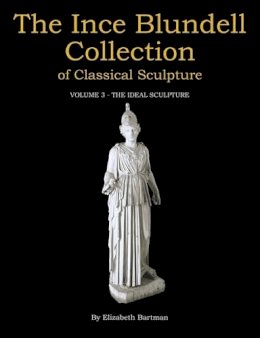
Stock image for illustration purposes only - book cover, edition or condition may vary.
The Ince Blundell Collection of Classical Sculpture: Volume 3: The Ideal Sculpture
Elizabeth Bartman
€ 176.39
FREE Delivery in Ireland
Description for The Ince Blundell Collection of Classical Sculpture: Volume 3: The Ideal Sculpture
Hardcover. This book fully documents an outstanding collection of ancient Roman statues acquired by Henry Blundell of Ince Blundell Hall on his Grand Tour visits to Italy in the late eighteenth century. Num Pages: 272 pages, 400 black & white illustrations. BIC Classification: ACG; AFKB; AGC. Category: (P) Professional & Vocational. Dimension: 258 x 320 x 35. Weight in Grams: 2412.
This book investigates the important antiquities collection formed by Henry Blundell of Ince Blundell Hall outside Liverpool in the late eighteenth century. Consisting of more than 500 ancient marbles—the UK’s largest collection of Roman sculptures after that of the British Museum—the collection was assembled primarily in Italy during Blundell’s various “Grand Tour” visits. As ancient statues were the pre-eminent souvenir of the Grand Tour, Blundell had strong competition from other collectors, both British nobility and European aristocrats, monarchs, and the Pope. His statues represent a typical cross-section of sculptures that would have decorated ancient Roman houses, villas, public spaces, and even tombs, although their precise origins are largely unknown. Most are likely to have come from Rome and at least one was found at Hadrian’s Villa at Tivoli.
Although most of the works are likely to have been broken when found, in keeping with the taste of the period they were almost all restored. Because of their extensive reworking, the statues are today not simply archaeological specimens but rather, artistic palimpsests that are as much a product of the 18th century as of antiquity. Through them we can learn what antiquarians and collectors of the 18th century—a key period in the development of scientific archaeology as a discipline—thought about antiquity. Steeped in the work of such writers as Alexander Pope, an educated Englishman like Blundell sought a visual expression of a lost past. Restoration played a major role in creating that visual expression, and I pay close attention to the aims and methods by which the Ince restorations advanced an 18th century vision of the “classical.” The image of antiquity formed at this time has continued to exert a profound effect on how we see these pieces today.
The book will be the first to examine the ideal sculpture of Ince Blundell Hall in nearly a century. In so doing it aims to rehabilitate the reputations of a collector and collection that have largely been ignored by both art-lovers and scholars in post-war Britain.
Although most of the works are likely to have been broken when found, in keeping with the taste of the period they were almost all restored. Because of their extensive reworking, the statues are today not simply archaeological specimens but rather, artistic palimpsests that are as much a product of the 18th century as of antiquity. Through them we can learn what antiquarians and collectors of the 18th century—a key period in the development of scientific archaeology as a discipline—thought about antiquity. Steeped in the work of such writers as Alexander Pope, an educated Englishman like Blundell sought a visual expression of a lost past. Restoration played a major role in creating that visual expression, and I pay close attention to the aims and methods by which the Ince restorations advanced an 18th century vision of the “classical.” The image of antiquity formed at this time has continued to exert a profound effect on how we see these pieces today.
The book will be the first to examine the ideal sculpture of Ince Blundell Hall in nearly a century. In so doing it aims to rehabilitate the reputations of a collector and collection that have largely been ignored by both art-lovers and scholars in post-war Britain.
Product Details
Publisher
Liverpool University Press
Format
Hardback
Publication date
2017
Condition
New
Number of Pages
400
Place of Publication
Liverpool, United Kingdom
ISBN
9781781383100
SKU
V9781781383100
Shipping Time
Usually ships in 7 to 11 working days
Ref
99-50
About Elizabeth Bartman
Elizabeth Bartman was President of the Archaeological Institute of America between 2011-2014 and is a Fellow of the Society of Antiquaries, London, as well as a Fellow of the American Academy in Rome. Elizabeth is also a Paul Mellon Visiting Senior Fellow at the Center for the Advanced Study of the Visual Arts, National Gallery of Art, Washington, DC and a Corresponding Member for the Deutsches Archäologisches Institut.
Reviews for The Ince Blundell Collection of Classical Sculpture: Volume 3: The Ideal Sculpture
Reviews 'The catalogue will be found useful and illuminating to scholars; Bartman’s considerable efforts may be judged to have increased the value and interest of Blundel’s collection. Such an undertaking as the Ince Blundell Research Project is not for the faint-hearted.' Susan Walker, The Burlington Magazine 'The detailed analyses and studies regarding the proveniences of the sculptures are remarkable.' Alice Landskron, Bryn Mawr Classical Review
